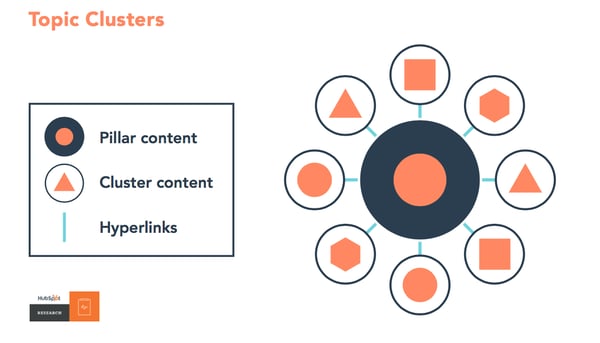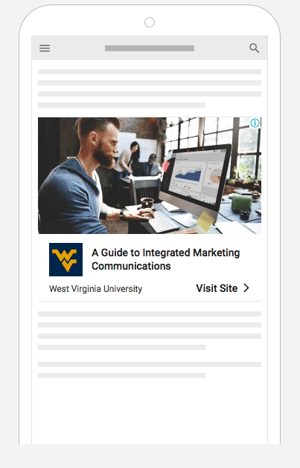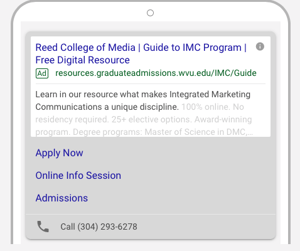Here’s What SEO Used to Look Like
In 2004, the Merriam-Webster Word of the Year was “blog.” Fifteen years ago, the world was just beginning to take notice of this form of online content, and “blog” became one of the most looked-up terms as people wrapped their heads around the new phenomenon.
In the early, primitive days of SEO, the two most important things to Google were…
-
the number of indexed pages associated with your site (more indexed pages equaled more topic authority),
-
and the keywords that appeared on the page (the more keywords there were on the page, the more it was assumed the page was highly relevant to the searcher).
We all know what early SEO led to: keyword stuffing and massive proliferation of online content.
Some of this content was quality stuff, as companies, institutions, and individuals found their online voices. But much of it was junk: pages and pages of useless or repetitive posts and landing pages that “stuffed” the same keywords in over and over. Ultimately, it became harder and harder for a Google user to separate quality content that matched their search needs from the online drivel.
What did Google do to help make search more sophisticated at weeding through the enormous amount of online content? It evolved to focus on the user experience.
Here’s a Look at What Matters for SEO Today
In order to understand what content users were finding truly valuable, Google simply began to watch the way users interacted with web pages.
Here are some basic questions and the Google SEO tactics/metrics that are related:
-
Did they click through to the page and immediately bounce back to the Search Engine Results Page (SERP) because the content wasn’t relevant or interesting? (Time on Page, Scroll Depth Percentage, Bounce Rate)
-
Did the page take so long to load that the user clicked away in frustration? (Page Speed or Load Time, Site Optimization)
-
Did they dig deeper into the site, finding other pages and posts on your site and other sites that were relevant to their original query? (Site Architecture, Content Pathways, Link Building)
-
Did they use a more personalized question query instead of simple search terms? (User Intent, Keyword Optimization)
Google has repeatedly changed its SEO priorities in order to fit the way users are actually searching. The following is a non-comprehensive list of what Google is paying attention to today. (There’s a difference between Google’s explicit, official SEO ranking factors and things they say they pay attention to to improve their machine learning—however, we think that it’s important to pay attention to all the hints Google gives about SEO, explicit or non-explicit!)
Check out this SEMRush study on ranking factors if you want to dive deep.
-
Keyword Optimization—Google doesn’t want you to fill your pages with awkward keyword phrases, but it does want you to clearly convey what your page is about and what questions it can answer for the search user. The trick to this is including relevant keywords and related phrases in a way that’s natural.
-
Mobile Optimization—let’s face it, over 50% of all web traffic takes place on mobile phones. If the user is searching via a mobile device, Google will prioritize sites and web pages that are mobile optimized, this is called mobile-first indexing.
-
User Intent—no more exact match keyword searches! Google makes inferences about what the user intends to search for based on geographic data, previous search history, and more.
-
Site Architecture—Google wants to see clear pathways within your web pages that the user follows once they hit your site. This helps them know that the site is relevant, easy to navigate, and answering users’ questions.
-
Dwell Time and Time on Page—Google keeps it simple sometimes: how much time is passing between when a user clicks through to your site and then clicks back to the SERP? How much time do they send on the single page itself before moving elsewhere?
-
Scroll Depth Percentage—another metric to gauge your content’s usefulness: how far down the page are users getting?
-
Link Building—Google likes to see that your pages are linked from other sites and that you’ve linked to authoritative sources. This helps establish your reputability.
-
Bounce Rate—Google calculates the percentage of users who visit one page and one page only on your site before heading back to the SERP. It’s a measurement of your site as a whole, not individual pages.
-
Page Speed or Load Time—is your site packed full of massive images or other clunky features that impact load time? If so, Google is not likely to serve it up for search users; it prefers pages that are well optimized.
Here’s Why You Should Care
You may be thinking, “Well, this is all well and good, but what does this have to do with student recruitment? Isn’t this stuff for businesses and techies to worry about?”
We hear you, and we get it. But our goal is to empower you to think about your student recruitment strategies with a digital first mindset since the digital space is where there is real opportunity for differentiation and success in higher education marketing.
Google’s algorithm changes and SEO more generally have the potential to amplify or hurt your student recruitment strategies. Whether you like it or not, Google’s choices affect your website, content, webinar, and landing page performance, either increasing or decreasing the likelihood that your program or institution will end up in the SERP of a prospective student.
It’s important to understand and take advantage of the possibilities of SEO in order to improve your ability to attract qualified prospects via digital channels.
While you may not have direct control over your program’s web pages or your institution's website as whole, it’s crucial that you become more aware of how your digital presence is impacting your SEO performance and that you begin to think holistically about your online and offline recruitment efforts.
Next, we’ll talk you through some common sense methods of creating and arranging content across your website to increase your visibility in Google search results.





